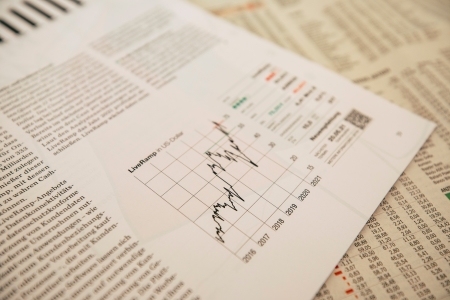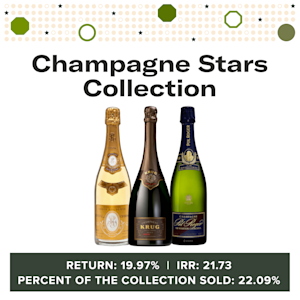Wine As An Asset
Simply put, Investment-grade wines are a unique subset of wines that represent a small fraction of all wines produced in the world.
To be considered an investment-grade wine, a wine should be capable of aging and improving for an extended period of time, be produced in limited volumes, and be made by a producer who has a reputation for producing high-quality wines (or is likely to develop one in the future). All of these attributes typically indicate the potential for future price appreciation.
Wine’s Super Power: Decreasing Supply and Increasing Quality
As you already know, investment-grade wine and spirits are consumable goods, and even though some buyers purchase with the intention of reselling at a later date, many collect wines to drink over time, thereby reducing the available supply. Fine wine has an additional characteristic that adds to its potential value: if stored properly, the quality and complexity of the wine has the potential to increase as time passes.
Unlike other physical collectible asset classes like art, sports cards, or precious metals, the underlying assets of a wine investment are developing and improving. This added layer of quality appreciation sets investment-grade wines apart from all other physical asset classes, including bottled whisky, which doesn’t continue to develop in the bottle. These product characteristics can be excellent catalysts for consumer demand and value growth.
What Does The Wine and Spirit Selection Process Look Like?
The selection process for a Vint collection involves analyzing a wide range of quantitative and qualitative data. We will dive deeper into some key factors below, but as an overview, we start by considering general features of the wine (or spirit); where it comes from, who produced it, and what the growing season was like in the year it was produced, production methods employed, etc. We also take production volume, market availability, and overall levels and intensity of demand into account.
We then perform due diligence to ensure the assets are pristine, have been sourced through trustworthy and reputable sources, and are stored in ideal conditions. Finally, we establish the fair market value for the assets using various data points and use this as the basis to negotiate the most favorable acquisition costs for the investors on Vint.
Region: Where Is It From?
One important factor to consider is the region where the wine was produced, its reputation for quality, and the overall demand for the region’s wines. Certain wine-growing regions like Bordeaux and Burgundy, for example, are in high demand globally, whereas a lesser-known region like Ribera del Duero, which also produces world-class investment-grade wines, may not be. A valued regional reputation is the result of consistent, high-quality production over an extended period of time and can be a catalyst for predictable market demand for the wines.
Producer: Who Made It?
The next key variable in the selection of an investment-grade wine or spirit is the producer and their reputation for creating great products. Many top producers have long track records, some going back centuries, of producing high-quality wines that have grown in popularity and demand over the years. However, there is a younger guard of “Cult Wines” that have quickly risen to prominence in recent decades due to critical acclaim and buzz around the wines (think Pavie, Screaming Eagle, Pingus). The wines of top producers regularly garner higher prices than their regional peers regardless of vintage.
Vintage: When Was It Produced?
Vintages are integral in the assessment of investment-grade wine and spirits.
For spirits, age statements and distillation years give the buyer less information about the conditions when the grain was harvested but more about how long the liquid was spent maturing in barrel. This is key data, as whisky only develops while it ages in the barrel and does not mature further once bottled.
For wines, the year in which a wine was produced is crucial because the weather during a growing season can dramatically impact the quality and/or quantity of the wine produced that year and how it may develop with time.
Critic Rating: What do the experts think?
Additionally, top wines are regularly evaluated and scored by critics, and these scores can have a big impact on a wine’s demand and market value. For example, wines that receive 100-point scores from top critics are often viewed as ‘trophies’ among collectors, and generally command higher prices than wines from the same producer that score lower. We also use scores as a tool to understand quality and how a wine is developing in the bottle.
Scarcity and Liquidity: How Much Is There and Does Anyone Want It?
Scarcity and liquidity are intrinsically linked when it comes to the selection of investment-grade wine and spirits. Being that wine and spirits are consumable assets that people want to drink, scarcity can drive price appreciation. At the same time, there needs to be an active market to support accurate valuation, along with sufficient demand to allow for a timely sale at the anticipated price. With these realities in mind, production levels, total availability, and historical market demand for specific regions, producers, and vintages, are key factors that are considered in the asset selection process.
Provenance: Where Has The Asset Been Stored And What Is Its Condition?
Provenance is a critical factor to consider during the selection process. The term “provenance” refers to the ownership and storage history of a product since being released by the producer. The quality and demonstrability of an asset’s provenance and condition have a direct impact on the value that it will command on the open market. Vint has developed a tight network of trusted sourcing partners and professional storage facilities to ensure our demanding standards are met and maintained from end to end.
Pricing: How Much Is It?
The final phase of our selection process is to establish a fair market value for the wines and spirits we source. We collect the market pricing for the wine using global and local data and make an assessment based on all of the aforementioned considerations. We also make comparisons to similar quality vintages from the same producer to assess current value, as well as to understand potential price appreciation in the future. Additionally, we may also compare products to peer groups of assets that we feel are analogous to the products under consideration. We use all of this data as the basis to negotiate the best possible acquisition costs for the wines and spirits we source for our collections.
Conclusion
There is quite a bit to understand when it comes to fine wine and spirits investing, and we understand it is unrealistic to expect our investors to do this on their own. That’s why we’ve put so much energy and effort into building a strong wine team and wine advisory committee: to allow Vint to provide investors with unique opportunities, advantageous pricing, and most importantly the information they need to make informed decisions about their investments.


